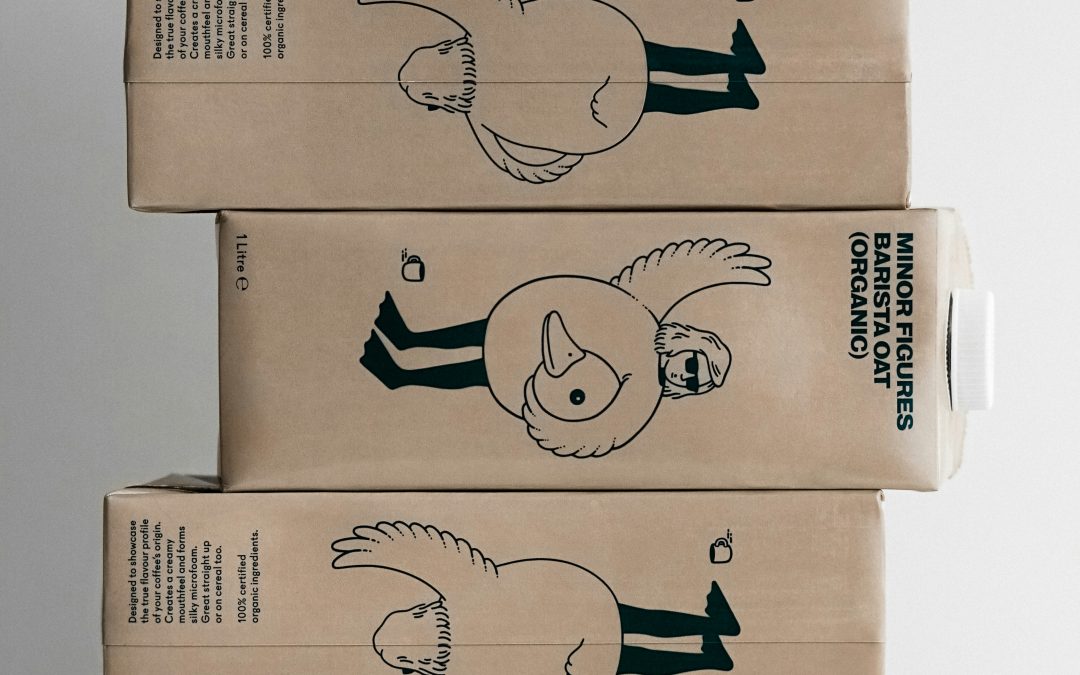
by Jennifer Hart Yim | Jan 8, 2025 | Marketing, Packaging
We’re showing you exactly how packaging companies we’re working with are using account-based marketing (ABM) to increase market share, shorten sales cycles, and win more strategic accounts. Consider this a packaging professional’s blueprint for target account success.
What is Account-Based Marketing for the Packaging Industry?
Account-based marketing is a strategic approach that focuses marketing and sales resources on specific high-value accounts rather than broad market segments. This means targeting key accounts with personalized campaigns that address their unique packaging challenges, sustainability goals, and innovation needs.
Here’s an example of what that could look like for a packaging marketer:
If consumers in Brazil begin demanding smaller milk carton sizes to reduce food waste, packaging companies might use traditional marketing to broadly promote “flexible filling solutions” to all dairy manufacturers. Instead, an aseptic packaging provider could use account-based marketing to stand out and create a highly targeted campaign for Nestlé. This campaign could specifically address Nestlé’s need to fill multiple carton sizes (500ml, 750ml, and 1000ml) for their Molico and Ninho UHT milk brands on a single production line.
Unlike traditional marketing, ABM delivers:
- 2x higher engagement rates with technical decision-makers
- 42% reduction in packaging qualification cycles
- 27% increase in contract values
- 35% improvement in customer retention
How to Build a Winning ABM Strategy
1. Define Your Ideal Customer Profile (ICP)
Success in ABM starts with identifying the perfect packaging customer. Here are some ways you can start to categorize their characteristics:
Industry Focus:
- Food and beverage manufacturers
- Pharmaceutical companies
- Consumer packaged goods (CPG)
- Industrial products
- Chemical companies
- E-commerce retailers
- Automotive suppliers
Operational Characteristics:
- Production volumes and capacity
- Geographic footprint
- Technical requirements
- Regulatory frameworks
- Sustainability commitments
Business Indicators:
- Annual packaging spend
- Growth trajectory
- Innovation appetite
- Quality standards
- Compliance needs
2. Select and Prioritize Target Accounts
Develop a tiered approach to account selection:
Tier 1: Strategic Accounts
- Major CPG companies
- Global pharmaceutical manufacturers
- Leading food and beverage brands
Tier 2: Growth Accounts
- Regional packaging buyers
- Emerging brands
- Contract manufacturers
Tier 3: Scale Accounts
- Local manufacturers
- Specialty product makers
- Start-up brands
3. Map the Packaging Decision-Making Unit
Here’s where you’ll determine who you’ll be targeting. Identify and engage with those key stakeholders. They could be part of any of the following functions:
Technical Team
- Packaging Engineers
- R&D Directors
- Quality Assurance Managers
Commercial Team
- Procurement Directors
- Supply Chain Managers
- Sustainability Officers
Executive Level
- Operations Directors
- Innovation Leaders
- C-Suite Decision Makers
Content for Account-Based Marketing for the Packaging Industry
Technical Content
Develop materials that showcase your packaging expertise:
- Barrier performance studies comparing EVOH vs. metallized films for snack packaging
- Technical specifications for child-resistant pharmaceutical blister packs
- FDA compliance guides for direct-food-contact packaging materials
- Innovation roadmaps for smart packaging with NFC technology
- Sustainability impact reports on PCR content in HDPE bottles
Commercial Content
Create content that drives packaging business decisions:
- Cost calculators comparing glass vs. PET bottles for beverage lines
- Production efficiency studies for servo-driven cartoning machines
- Risk analyses of aluminum foil supply chain disruptions
- Market trends in mono-material flexible packaging adoption
- Benchmarks of European vs. US sustainable packaging regulations
Implementing Your Packaging ABM Program
Essential Tools and Technologies
Invest in the right technology stack:
- ABM platforms for account targeting
- CRM systems for relationship management
- Marketing automation for personalization
- Analytics tools for performance tracking
- Technical collaboration platforms
Multi-Channel Engagement Strategy
Coordinate your outreach across channels:
- Technical consultations
- Innovation workshops
- Sustainability forums
- Digital demonstrations
- Industry events
- Direct mail campaigns
Measuring the Success of Account-Based Marketing for the Packaging Industry
Key Performance Indicators
Track these critical metrics:
- Account engagement scores
- Technical trial conversion rates
- Sales cycle duration
- Contract win rates
- Customer lifetime value
- Innovation adoption rates
ROI Calculation Framework
Measure your ABM investment returns:
- Cost per account engagement
- Revenue per target account
- Marketing qualified account (MQA) conversion
- Technical qualification success rates
- Long-term contract values
Common ABM Challenges (+ Solutions) Packaging Professionals Face
Challenge 1: Long Technical Qualification Cycles
Example solutions:
- Provide rapid prototyping of thermoformed packages using 3D-printed molds
- Offer accelerated shelf-life testing for new barrier materials
- Supply preliminary migration testing data for food-contact materials
- Create digital twins of packaging lines for virtual testing
Challenge 2: Multiple Stakeholder Alignment
Example solutions:
- Develop sustainability scorecards that satisfy both procurement and ESG teams
- Create ROI models that connect packaging automation with labor savings
- Build material transition roadmaps that align with corporate sustainability goals
- Provide comparative LCA (Life Cycle Assessment) data for different packaging options
Challenge 3: Complex Approval Processes
Example solutions:
- Map decision workflows
- Create milestone-based content
- Offer phased implementation plans
Top Tips for ABM Success
- Start with a pilot program focusing on 5-10 key accounts
- Invest in technical expertise and support
- Align sales and technical teams early
- Focus on sustainability and innovation
- Measure and adjust continuously
How to Get Started
- Assess your current account relationships
- Identify your top 10 target accounts
- Map stakeholders and decision processes
- Develop your technical content strategy
- Implement tracking and measurement systems
Questions We’ve Gotten from Packaging Professionals About ABM
Q: Can you give me an example of how ABM is different from traditional packaging marketing?
A: While traditional marketing might broadly promote your shrink sleeve capabilities to all beverage companies, ABM would create a targeted campaign specifically for Coca-Cola’s Southeast Asia expansion, addressing their specific need, sustainability, and localization requirements. This focused approach delivers personalized engagement at every level of their decision-making process.
Q: What budget should packaging companies allocate to ABM?
A: The most successful ABM programs are funded at about 15-25% of the total marketing budget. For example, a flexible packaging manufacturer might allocate $200,000 annually to target 10 key CPG accounts, with roughly $20,000 per account for technical content development, prototype creation, and specialized testing programs.
Q: How long does it take to see results?
A: You’ll start to see the needle move within 3-6 months. For example, you might notice increased participation in packaging innovation workshops or material qualification trials. Significant revenue impact typically occurs within 9-12 months, as seen in new packaging format adoptions or multi-year supply agreements.
Q: Which metrics matter most?
A: Focus on account engagement scores, technical qualification rates, sales cycle duration, and contract values.
Q: How can smaller packaging companies implement ABM?
A: Start with a focused program targeting 3-5 key accounts and leverage digital automation tools for efficiency and AI tools to scale.
Want to change how your packaging company targets high-value prospects and land major accounts? We’re happy to help you get started. Get in touch.
Read more:
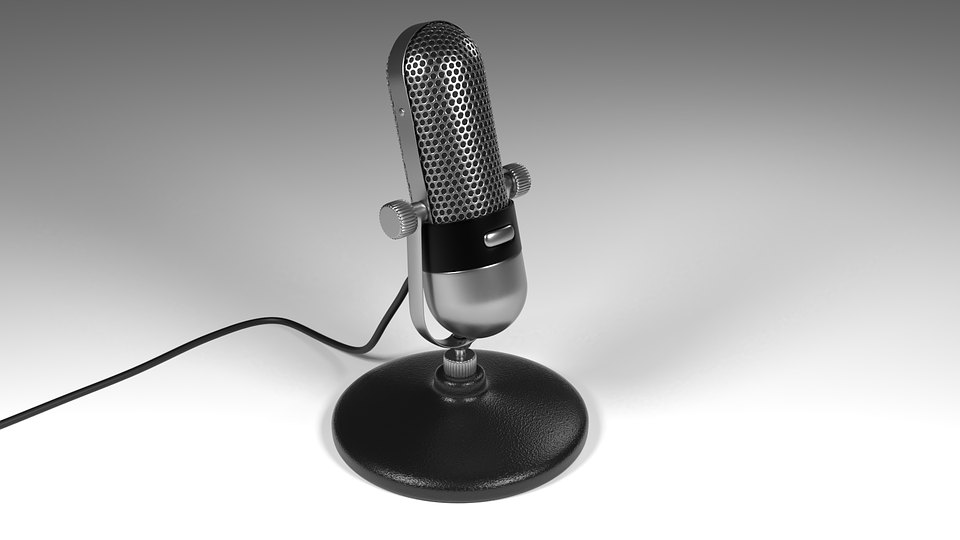
by Fronetics | Jul 2, 2019 | Blog, Content Marketing, Marketing, Packaging, Supply Chain
Looking for ways to make your morning commute more productive? These 4 podcasts for packaging and supply chain professionals are on our must-listen list.
Highlights:
- Download podcast episodes for on-the-go access to innovations, insights, and analysis from leading industry figures.
- Talking Logistics with Adrian Gonzalez is both highly approachable and insightful.
- SupplyChainBrain’s episode on Trends in Packaging is a must-listen for packaging industry professionals.
It wasn’t all that long ago when the options for the morning commute were limited by what CDs you had in your car (or Walkman) or what was playing on the radio. With the rise of podcasts, we’re no longer stuck choosing between rowdy drive-time radio hosts or NPR. We’ve chosen 4 podcasts for packaging and supply chain professionals that offer top-notch industry analysis, insights, and conversations.
Podcasts are a series of digital audio files that enable users to subscribe and download, so listening on the go doesn’t mean using up your data plan. There are all kinds of podcasts out there on essentially every topic you can imagine. These 4 podcasts for packaging and supply chain professionals will feed your mind, expand your insights, and some might even make you crack a smile!
4 podcasts for packaging and supply chain professionals
1) Talking Logistics with Adrian Gonzalez
We love supply chain and logistics analyst Adrian Gonzalez’s conversational podcast. Listen to a few episodes, and you’ll feel like you’re in on a conversation with your brightest professional contacts. Gonzalez’s easy-to-follow format on Talking Logistics gives it a friendly, casual feel, but it’s bristling with keen insights. The podcast features interviews with industry thought leaders and newsmakers, including supply chain and packaging executives from leading retail companies, academics, authors, and executives from 3PLs.
Recent must-download episodes:
2) SupplyChainBrain
SupplyChainBrain is a series of in-depth conversations with industry leaders, consultants, academics, and experts from every aspect of supply chain management, including packaging. Always current, the podcast has been producing weekly episodes since its launch in 2013. It covers topics like retail shifts, blockchain innovations, labor shortages, and the Internet of Things, and its excellent overview episode “Trends in Packaging: The State of the Art” is a must-listen.
Recent must-download episodes:
3) LogicalLogistics
Though the episodes are older, Bellair Expediting’s podcast is worth listening to, particularly for the packaging industry. It features interviews with executives and experts in transportation, logistics, packaging, and more.
Must-download episodes:
4) Straight Talk with Supply Chain Insights
Research and advisory firm Supply Chain Insights hosts its weekly podcast, Straight Talk, which covers topics from global thinking to trends in data and packaging. Most episodes take the form of conversations and interviews with executives and experts, sharing supply chain and logistics insights.
Recent must-download episodes:
What podcasts for packaging and supply chain professionals have you been listening to lately?
Recent posts:
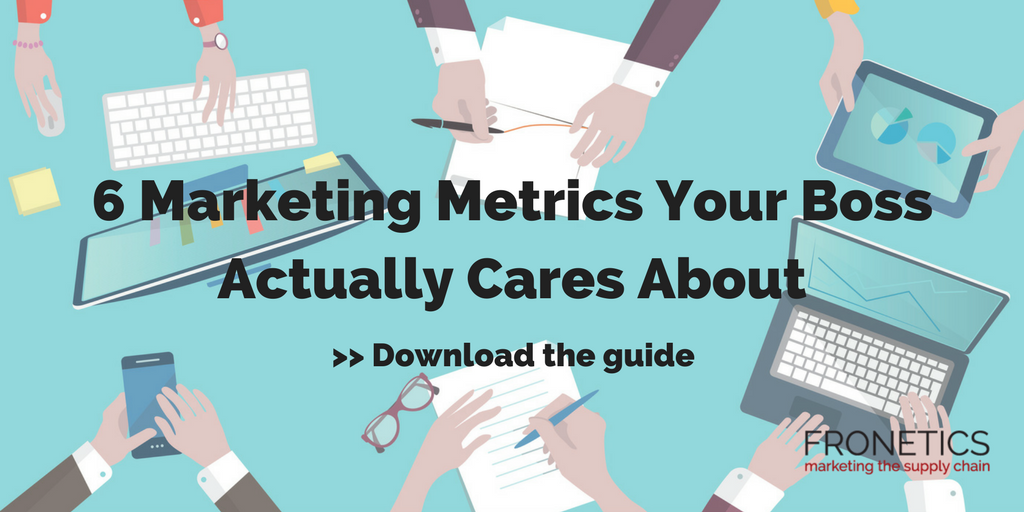
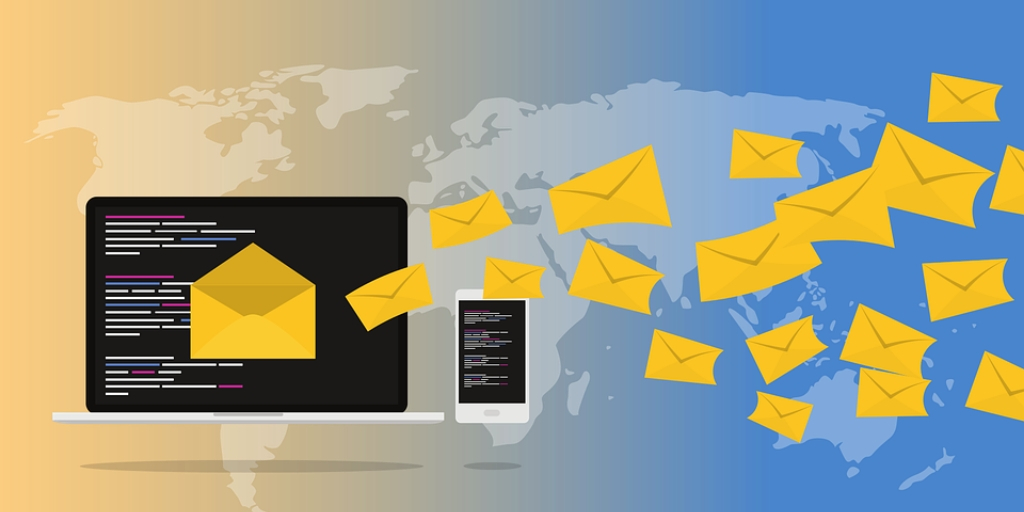
by Fronetics | Mar 15, 2019 | Blog, Marketing, Marketing Automation, Packaging, Supply Chain
Packaging industry marketers: check out these marketing automation tools for email workflows, social media scheduling, and customer relationship management.
Highlights:
- Customers increasingly expect packaging to be personalized to suit their needs.
- Personalize leads’ interactions with your business through automated processes.
- Get help with email workflows, social advertising, and customer relationship management.
Lately it seems like everyone is talking about marketing automation. As B2B buyers increasingly demand personalized experiences through the buyer’s journey, marketers’ jobs are getting tougher, as they need to provide custom lead-nurturing content to all prospects in their databases. This is particularly true for the packaging industry, as B2B customers expect that packaging will be highly personalized to suit their needs.
And that’s where automating marketing tasks can help.
The term “marketing automation” refers to a variety of tools used to automate the process of personalizing leads’ interactions with your business. The sheer variety of these tools can sometimes be overwhelming — so we’ve pulled a few of our favorites in the categories of email workflows, paid advertising, and customer relationship management.
6 marketing automation tools packaging marketers
Email workflows
1. Customer.io
This tool lets you send targeted messages to your customers, crafting them based on how they interact with your business and making personalized messages simple. You can also keep track of conversions and create customer profiles. Our favorite part? It integrates with your mobile app or website, letting you see data in real time and trigger actions by adding in predefined rules.
2. Constant Contact
This powerful tool has some features that are unique — and can take your marketing capabilities beyond the basics. Beyond setting up and managing an automated database, Constant Contact offers Facebook fan promotion, coupons and deals, and event management.
Paid advertising tools
3. AdRoll
This is an extremely effective tool for retargeting customers through re-engagement on Facebook, Twitter, and elsewhere on the web. It offers cross-device and cross-platform retargeting capabilities, as well as flexible segmentation, letting you provide customized experiences that dramatically improve your marketing efficiency. It also offers customized budgeting and full control over ad spend.
Customer relationship management (CRM)
4. Pardot
Pardot is an all-inclusive marketing automation suite, but it’s particularly strong for amping up your engagement with CRM integration. It’s a great tool for helping your sales team shorten the sales cycle. And, in addition to CRM integration, it offers email marketing, lead nurturing, lead scoring, and ROI reporting.
5. Marketo
This cloud-based marketing software lets you drive revenue with lead management and mobile marketing. It not only helps build customer relationships, but it helps you sustain them as well. Best of all, you can try it out for free until you’re sure it’s right for your business.
Bonus all-in-one tool
6. HubSpot
HubSpot is an inbound marketing tool that lets you generate leads, close deals, and manage your sales pipeline from start to finish. It integrates beautifully with a content marketing strategy, with the goal of turning outbound leads into inbound ones. It includes revenue reporting, custom-event reporting, custom-event automation triggers, predictive-lead scoring, contacts and company reporting, and event-based segmentation.
What marketing automation tools are you using to create efficiencies in your packaging business?
Related posts:
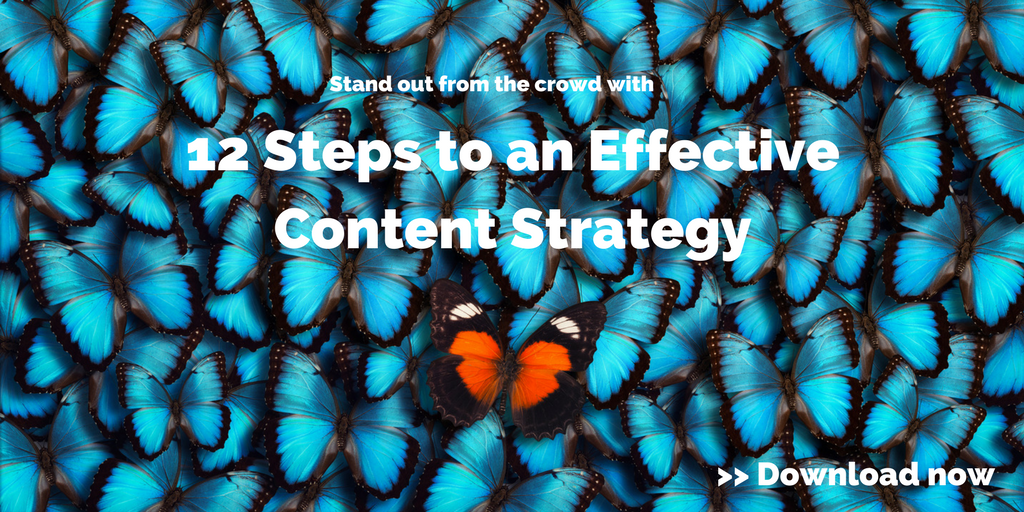

by Fronetics | Feb 21, 2019 | Marketing, Packaging, Social Media, Supply Chain
Social media is changing just about everything about the way brands market themselves — including packaging design.
Highlights:
- Packaging is a valuable content channel.
- Brands need to make packaging design decisions with an eye to how they read in thumbnail images.
- Use scalable imagery and optimize form function, color pallet, and font for user-generated social media content.
Social media has had an impact on just about everything in our lives, and the packaging industry is no exception. Have you ever considered that packaging is a form of content? In fact, the packaging design of goods is yet another opportunity for the delivery of branded content that engages buyers with brands.
[bctt tweet=”The packaging design of goods is yet another opportunity for the delivery of branded content that engages buyers with brands.” username=”Fronetics”]
Furthermore, in this environment where the lines between the digital and material worlds are increasingly blurred, savvy marketers are making sure that packaging aligns with online branded content, creating a cohesive consumer experience. As Mark Hewitt of SGK puts it, “By using the pack as media, brands can create a long-term content journey that builds over time.”
These days, social media is one of the biggest influencers in brands’ packaging design, as marketers continue to harness the power of instantly identifiable packaging.
Three ways social media is shaping the packaging industry
The beauty industry is just one example of where social media is revolutionizing the way marketers are conceiving of packaging design. This is an industry where aesthetic appeal has long been a big part of how beauty products were packaged, but brands have shifted their perspective in light of social media’s impact.
Says beauty branding and product design consultant Rinat Aruh, “We used to use the lens of: How do we design to create an impact on shelves? But now, we design for the thumbnail, which really changes some of the choices we make.”
So how are brands adapting their packaging? Paul Nowak, senior director of sales strategy and business development at QuadPackaging, has identified these three key factors.
1) Scalable imagery
We live in a mobile world. Images on social media are overwhelmingly viewed on mobile devices, and it’s crucial for designers to take this into account when making packaging decisions. Designs need to grab attention from the thumbnail, as Aruh alluded to. “This means that before designers finalize the packaging form and the brand design of the creative components, they need to add a step that tests the image on social media platforms and views them on a smartphone, not a desktop,” says Nowak.
2) Form function
Packaging designers have traditionally taken into account form in making design decision. At every phase of the supply chain, it needs to safeguard the product and express the brand and function. But when you put social media into the equation, form decisions take on a new dimension, as many consumer products are exclusively recognizable in social media posts by their packaging.
Nowak uses the example of consumer products like hand lotion. The decision to package the product in “a small tube, a large pump, or an elegant jar all convey different aspects of the brand experience and function of the packaging.”
3) Color pallet and font
As with form function, color and font decisions have always been key factors for packaging design. But these days, decisions about these design elements aren’t about what catches the eye on a shelf or even on a brand website.
Brands need to make decisions about color and font with an eye toward how they play on social media. This often means a simpler approach, making packaging clean and easily identifiable, even from a thumbnail. “Forward-thinking designers will add a social media test in their design phase to assure brand recognition in all media channels,” says Nowak.
What does the future hold?
If we know one thing about social media and how it impacts the marketing landscape, it’s that change is going to be pretty much constant. Brands need to continue approaching packaging as a valuable media channel and an opportunity to engage with consumers.
In addition to optimizing packaging for the user-generated content on social media, we’re seeing a rise of “connected” packaging. From Snap and Facebook codes, savvy marketers are recognizing the power of packaging design as nexus of the digital and material worlds.
Related posts:







